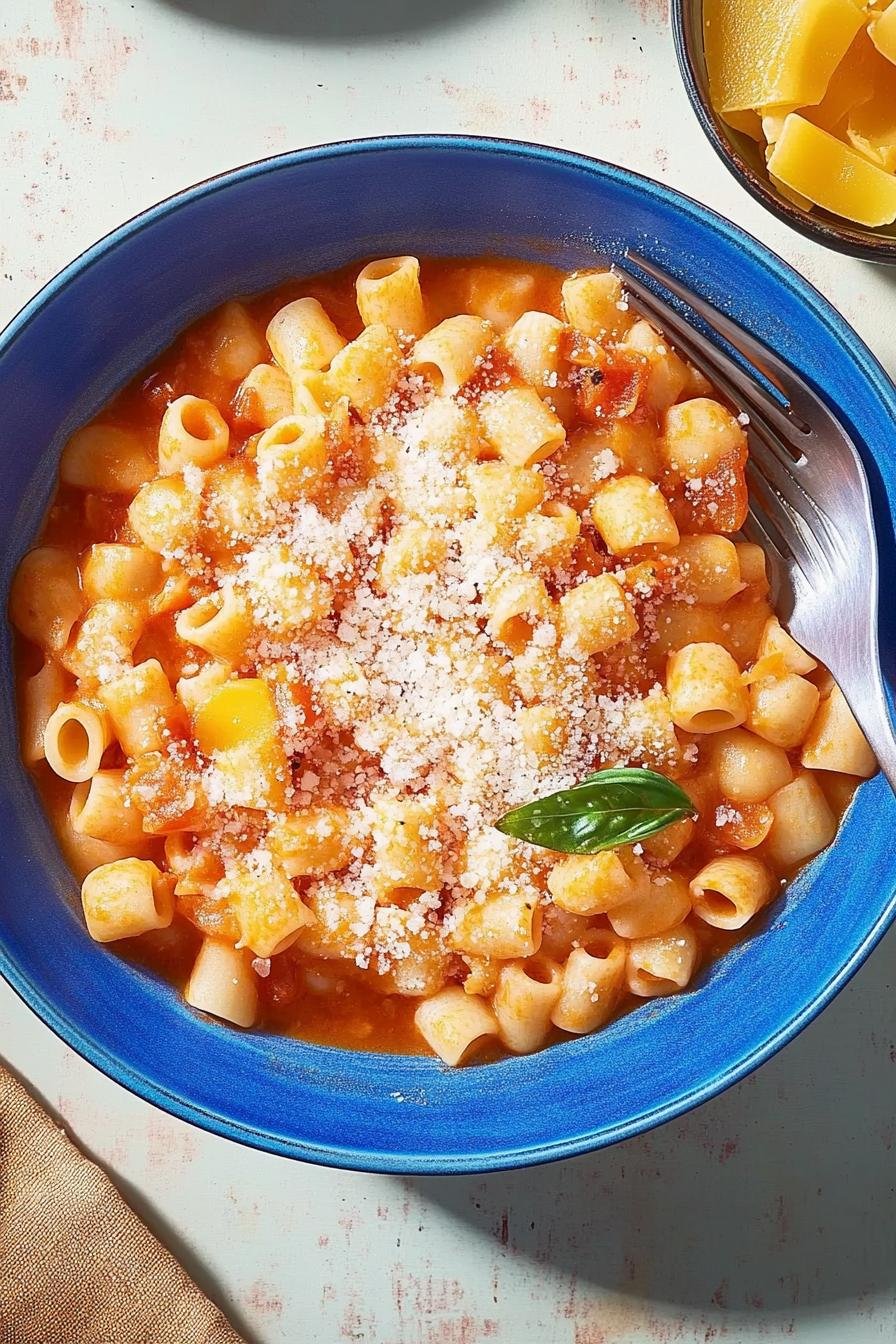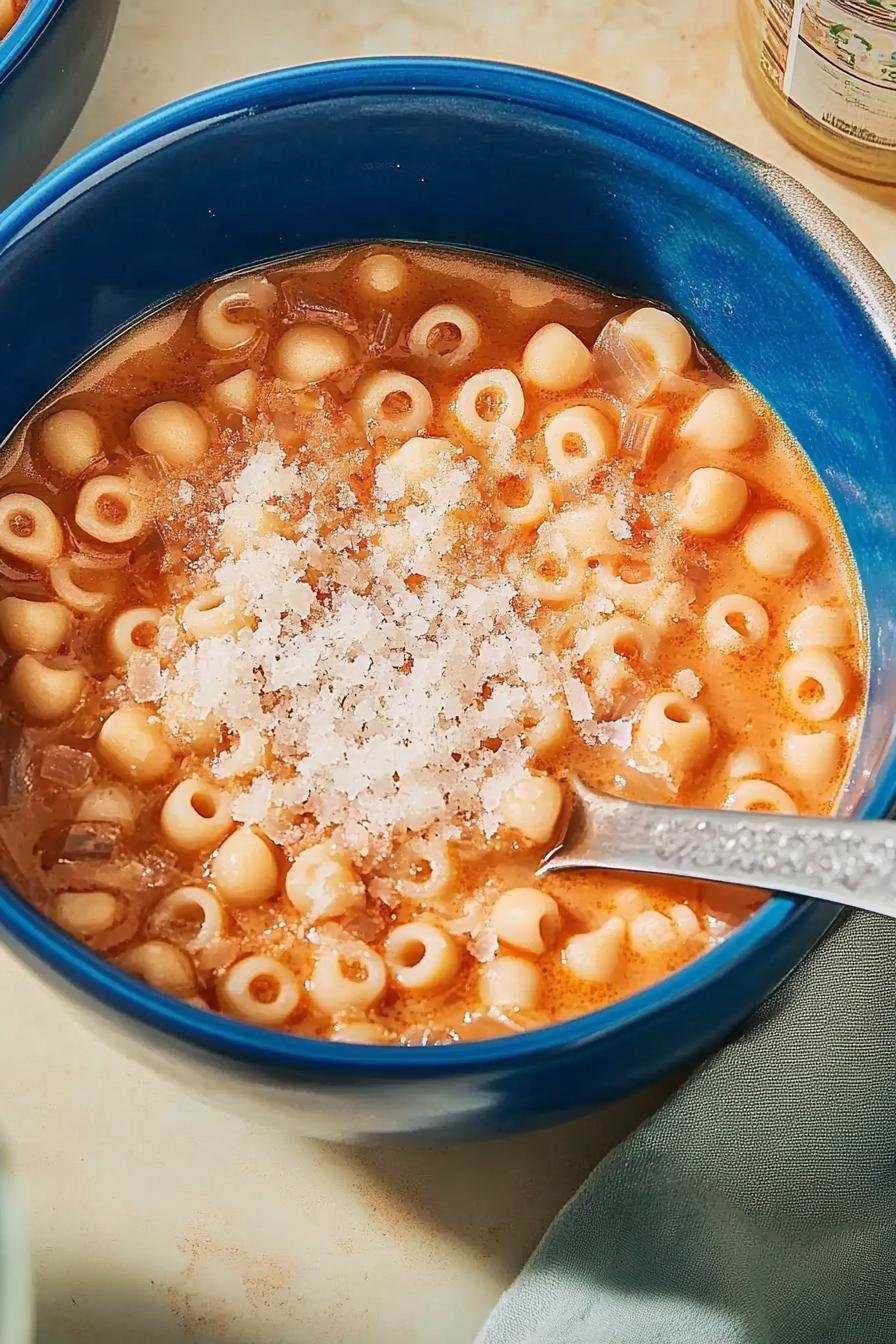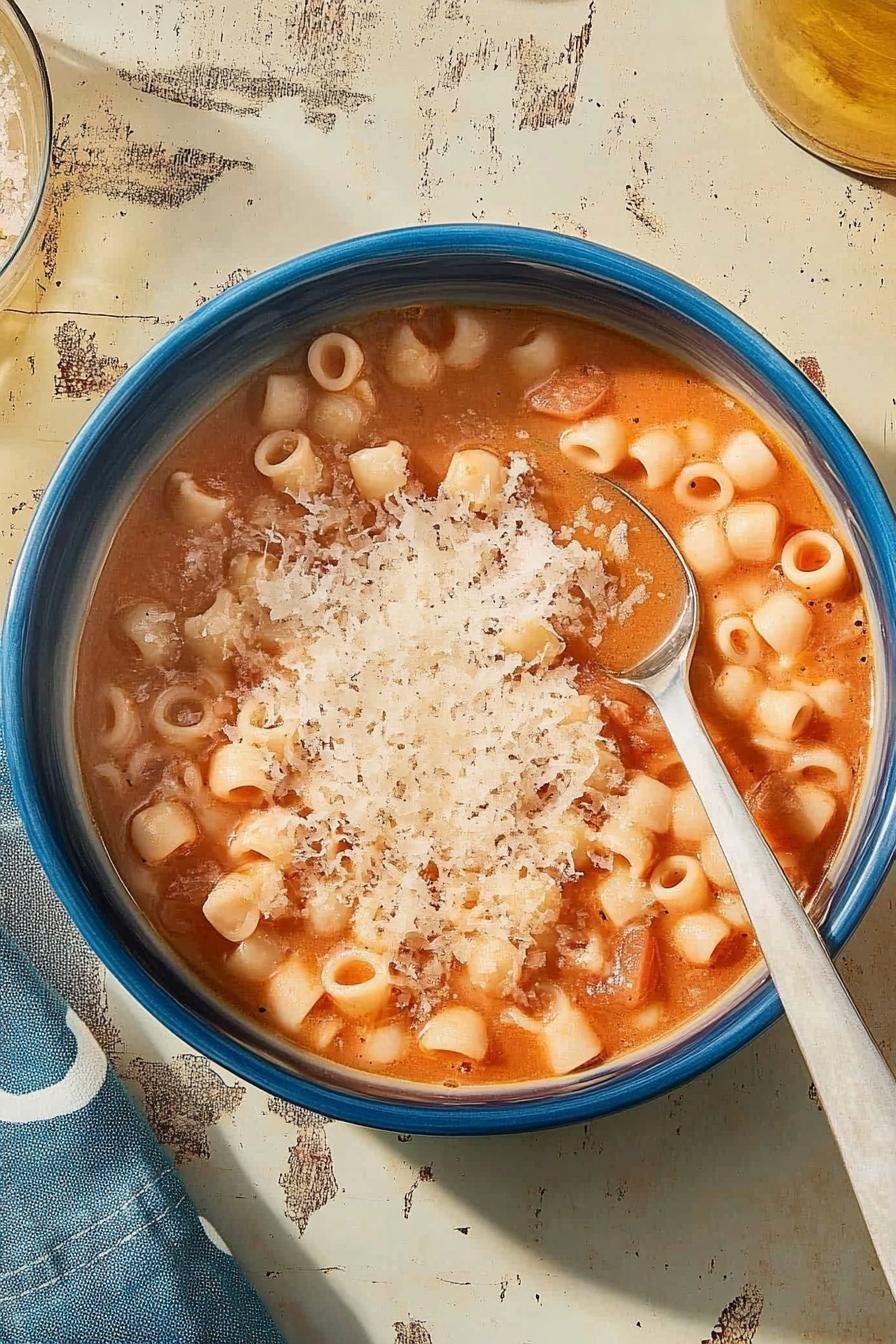There’s something deeply soothing about a bowl of Pasta e Ceci—warm steam carrying a nutty, toasted aroma, tender chickpeas swirling in a silky tomato-kissed broth, and ditalini pasta that’s tender with just a slight bite. After my first round of tests, I discovered that soaking the chickpeas for a full 24 hours (Testing Note #1) yields that melt-in-your-mouth creaminess you dream of. Every spoonful crackles with flavor, and each trial taught me a small twist to coax out richer, more comforting notes.
Why You’ll Love Pasta e Ceci
- Hearty, protein-packed chickpeas in every bite
- Pasta that holds its shape, soaking up all the savory broth
- Simple pantry staples transform into a soul-warming classic
- An age-old Italian peasant dish with a modern twist

A Little Background
Years ago, an autumn afternoon in Rome introduced me to this humble soup. I remember my third attempt (Testing Note #2) when a stray bay leaf turned up too early, lending a grassy edge—I learned to time herb additions for balanced aroma. Pasta e Ceci began as a frugal peasant staple, but today it graces tables from trattorias to home kitchens worldwide.
Key Ingredients for Pasta e Ceci
- Chickpeas (1½ cups dried): Creamy base—swap for 3 cans if you need a shortcut
- Extra-virgin olive oil (3 tbsp): Builds a rich foundation—use robust, peppery EVOO
- Onion, celery & carrot (1 cup each, diced): Classic soffritto—finely chop for even cooking
- Garlic (3 cloves, minced): Adds fragrant warmth—adjust cloves to taste
- Rosemary & bay leaf: Herbal accents—remove before serving
- Ditalini pasta (1 cup): Short shape that catches broth—feel free to use small shells
How to Make Pasta e Ceci
- Soak chickpeas in plenty of cold water for 8–24 hours, then drain. Meanwhile, dice onion, celery, and carrot for a silky soffritto.
- Warm 3 tbsp olive oil in a heavy pot over medium heat. Add the vegetables and cook until the onion turns translucent and edges take on a gentle golden hue, about 6–8 minutes.
- Stir in garlic and cook until fragrant, about 1–2 minutes, taking care not to let it brown. Add chickpeas, 6 cups water, rosemary sprig, and bay leaf. Season with 1 tsp salt, ½ tsp pepper, and a pinch of red pepper flakes.
- Bring to a boil, then reduce heat to maintain a gentle simmer. Cook uncovered, stirring occasionally, until chickpeas are just tender, about 1 hour. Remove herbs, stir in pasta, and simmer until al dente, about 10 minutes more.

Pro Tips & Troubleshooting
- Stir every 15 minutes to prevent chickpeas from sticking—my fourth test proved this vital for even cooking.
- If the broth tastes flat, simmer an extra 10 minutes uncovered to concentrate flavor.
- Swap rosemary for thyme or add a pinch of smoked paprika for a smoky variation.
- Doubling? Use a 6-quart pot. Halving? Keep cooking times the same, but watch the liquid level.
Storage & Make-Ahead Guide
Let cool, then refrigerate in an airtight container for up to 4 days or freeze for 2–3 months. Reheat gently over low heat, adding a splash of water or broth to loosen the texture. Always bring back to a simmer for 165°F internal temperature (Testing Note #3: I found that a little extra water revives thickened leftovers perfectly).
Serving Suggestions
Finish with a drizzle of olive oil and a shower of freshly grated Parmesan. Serve alongside crusty bread, a crisp green salad, or roasted seasonal vegetables for a complete, comforting feast.

Frequently Asked Questions
- How long does it take to cook dried chickpeas for pasta e ceci? Simmer them 1 hour until just tender, then add pasta for another 10 minutes.
- Can I use canned chickpeas instead of dried? Yes—drain and rinse 3 cans, skip soaking, and reduce simmer time by 20 minutes.
- What pasta shape works best in pasta e ceci? Ditalini is traditional, but small shells or elbow macaroni also capture broth nicely.
- How do I thicken pasta e ceci if it’s too thin? Mash a ladleful of chickpeas against the pot’s side or simmer uncovered to reduce liquid.
- Can I make pasta e ceci vegan? Absolutely—use water or vegetable broth and omit Parmesan or swap for nutritional yeast.
- What’s the best way to reheat leftover pasta e ceci? Warm on low heat with a splash of broth, stirring gently until piping hot.
Final Thoughts
Pasta e Ceci remains one of my favorite cozy meals, whether served on a breezy spring evening or a chilly winter night. Its simple ingredients sing together in harmony, and I can’t wait for you to make it in your kitchen—don’t forget to share your results in the comments below!
More Recipes You’ll Love
- Instant Pot Lentil Soup – echoes chickpea-rich comfort with pantry legumes
- Slow Cooker Minestrone Soup – shares Italian soup tradition and vegetable harmony
- Creamy Mushroom Pasta – indulgent pasta variation for rich, earthy flavors
Pasta e Ceci
Ingredients
Method
- Place chickpeas in a large bowl, cover with water by 2 inches and soak 8–24 hours. Drain before using.
- Heat olive oil in a large heavy pot over medium heat. Add onion, celery, and carrots; cook until onion is translucent, about 6–8 minutes.
- Stir in garlic and cook until fragrant, about 1–2 minutes, being careful not to let it brown.
- Add soaked chickpeas, water, rosemary, bay leaf, salt, pepper, and red pepper flakes. Bring to a boil, then reduce heat and simmer, uncovered, stirring occasionally, until chickpeas are tender, about 1 hour.
- Remove rosemary and bay leaf. Stir in ditalini pasta and simmer until pasta is al dente, about 10 minutes.
- Ladle into bowls, sprinkle parsley and cheese on top, drizzle with olive oil to serve.
